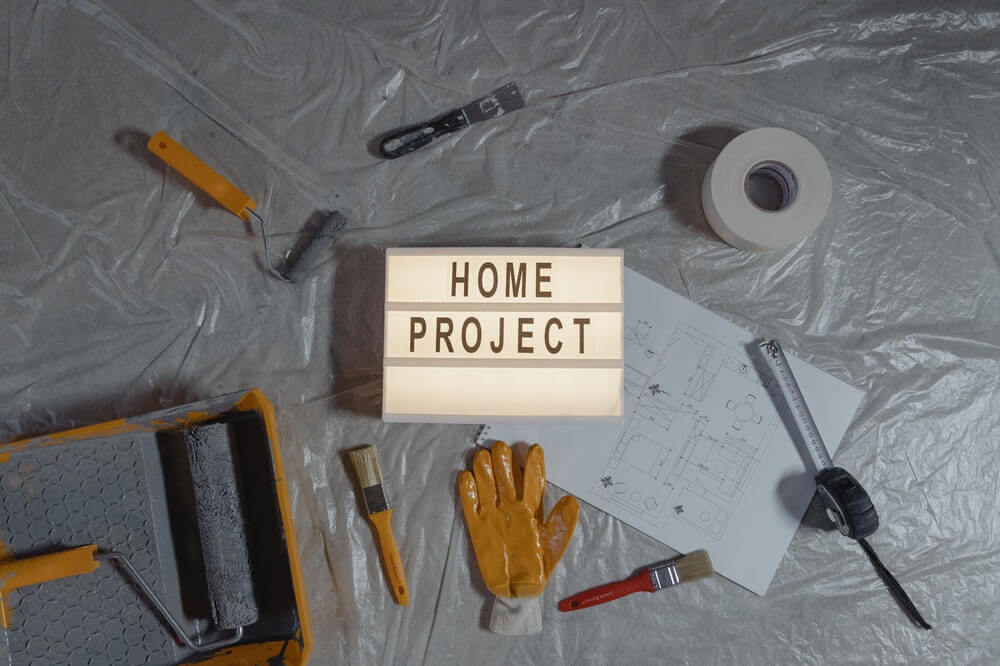DIY Home Upgrading: Safety Hazards to Consider

For decades, Australians young and old seem to have embraced the expression “Necessity is the mother of all invention.” We love setting the world right ourselves, and if that is not possible, we love fixing things ourselves – giving rise to a culture of DIY.
Family and friends often listen to our war stories about improvements and repairs done at home, but we are a tad reluctant to tell them about our failures, accidents, and injuries. Inspired by one’s unbridled ingenuity and resourcefulness, we often manage to finish a home project successfully, but let’s be honest: there usually are some disasters in our wake!
It’s one thing to suffer the humiliation and financial loss brought about by a DIY project gone wild, but it’s entirely another when we get injured in the process. Some of the thousands of injuries suffered by DIY-ers in any year are minor, but many are devastatingly severe. For these reasons, it would be wise to evaluate your DIY work experience and safety practices and whether it might be better to engage an experienced professional.
How Can I Improve My Home?
There are many ways in which to improve the comfort and liveability of your home. Here are some examples:
- Repair pool pavers – fix lifted and sunken pavers to save money and remove trip hazards on a wet surface.
- Lay a new lawn – at some point, a lawn may become so worn that it needs some serious work to get it back to its former glory.
- Build a retaining wall – an excellent way to deal with a sloping garden.
- Build a raised vegetable garden – relatively easy to do using timber sleepers and steel posts.
- Build or repair a fence – If you are lucky, the neighbour may pitch in, but often one simply has to get on and do it.
- Paint the house – the key is preparation, but anybody can do it.
- Replace the worn kitchen cupboard doors – your kitchen will look new!
- Clear the gutters and clean the roof – easy to do, but a long way to fall off an unreliable ladder.
Safety Hazards Associated With DIY-Ing
The most prevalent risks and hazards from working on construction sites are:
- Slips, trips, and falls.
- Noise.
- Hand-arm vibration syndrome.
- Material and manual handling.
- Collapsing trenches.
- Asbestos.
- Electricity.
- Airborne fibres and materials.
Take these risks and hazards seriously, and before you start your DIY project, consider whether any of them would apply. If so, plan how to mitigate those risks and take extra care when you begin the work.
If you deem the risks too high, it may be better to call in an expert to come and do the job for you.
Adopting Safer DIY Work Practices
As we’ve seen, there are several risks and hazards to keep in mind. Working at heights is one of the biggest causes of injuries, as is working with toxic substances.
Here are some essential tips to help you, your family, and other helpers keep safe while you tackle that long-overdue DIY project:
- Before you start, select a work area commensurate with the size of the project – ensure there is sufficient lighting and ventilation.
- Ensure you have the proper personal protective equipment (PPE) – dust masks, safety goggles, earplugs, gloves, the right shoes, and clothing.
- Avoid risky practices – when painting the exterior of your house, don’t use a ladder that is too short or unsecured, and don’t lean out to reach that elusive spot! And if you feel the roof is too high, leave the repairs to a professional.
- Wear a hard hat when appropriate – do not simply ‘hope for the best.’
- Keep tools and supplies away from small children –no explanation needed.
- Be cautious with power tools and read the owner’s manual – When using power tools, don’t follow the adage “When all else fails, consult the manual!”
- Ensure your garage and other workspaces have working fire extinguishers – your life may depend on it.
- When sanding wood and other surfaces, wear a dust mask – fibres and dust can be harmful to breathe.
- Work slowly and clean as you go – pick up new tools, tripping hazards, and scrap materials.
- Ensure your cutters, and drill bits are sharp – too much pressure on blunt tools can cause unexpected breakages and injury.
- Don’t get on the roof in bad weather or if the roof is quite steep – it’s no fun to come tumbling down.
- Keep a good first-aid kit around.
Building Safer Construction Sites
Although this article focuses on safety during DIY work, it is worth sharing some essential tips to improve safety on construction sites and larger scale DIY projects. These points demonstrate how important this is and that planning for a safer DIY experience is merely the beginning of building a safety culture – and the principles apply in any situation:
- Establish a safety culture – ‘Safety first’ should be the top priority for all construction companies. Getting all employees to buy into a safety culture requires a top-down approach, and it needs to be embedded in the company’s culture. “
- Create a site-specific safety plan – Construction projects differ and come with their unique obstacles and challenges. Construction planning is a vital task in successfully managing a project to completion, and planning the site’s safety should form part of that.
- Training – Ongoing training is vital. It helps embed the safety culture into the minds of all employees.
- Empower workers to speak up and hold each other accountable – Each and every person on the job site should feel comfortable speaking up when they observe unsafe working conditions.
- Conduct daily safety meetings – To stress the importance of safety, talk about it every day.
- Inspect, evaluate, and adjust – Inspect construction sites (including equipment and tools) before and after each workday.
TFR Construction – We Are Here To Support You
TFR Construction is Melbourne’s expert in earthworks, site preparation, retaining walls, and fencing. We are available to provide you with advice or services to help you turn your dream home improvements into reality.
Get in touch if you have any questions or schedule a no-obligation consultation. We have an experienced team that is committed to excellence and quality.
Recent Posts
A Parcel for the Picking – Things to Consider When Buying Land for Your Home
Selecting the proper parcel of land might be challenging but approaching the task with the correct knowledge makes it worthwhile.
Stone Landscaping: Adding Statement Stone and Boulders to Your Landscape
Stone landscaping is low maintenance, sustainable, and extremely versatile. Here is a realistic view of the main pros and cons of stone landscaping.
5 Ways to Beautify Your Sleeper Retaining Walls
In this blog post, we examine how you can combine looks and function with the latest designs of retaining walls available today.
How Sleeper Retaining Walls Can Help with Property Water Drainage Systems
We take a closer look at why retaining walls can be a fantastic solution for redirecting water around the house and protecting your foundation.
What Is a Commercial Contractor?
Contractors who work on commercial buildings have the know-how, expertise, and certifications to handle commercial construction work. But what exactly is a commercial contractor, and do you need one for your next project? Read on to find out if a commercial contractor is right for you.
Recent Posts
A Parcel for the Picking – Things to Consider When Buying Land for Your Home
Selecting the proper parcel of land might be challenging but approaching the task with the correct knowledge makes it worthwhile.
Stone Landscaping: Adding Statement Stone and Boulders to Your Landscape
Stone landscaping is low maintenance, sustainable, and extremely versatile. Here is a realistic view of the main pros and cons of stone landscaping.
5 Ways to Beautify Your Sleeper Retaining Walls
In this blog post, we examine how you can combine looks and function with the latest designs of retaining walls available today.
How Sleeper Retaining Walls Can Help with Property Water Drainage Systems
We take a closer look at why retaining walls can be a fantastic solution for redirecting water around the house and protecting your foundation.
What Is a Commercial Contractor?
Contractors who work on commercial buildings have the know-how, expertise, and certifications to handle commercial construction work. But what exactly is a commercial contractor, and do you need one for your next project? Read on to find out if a commercial contractor is right for you.





